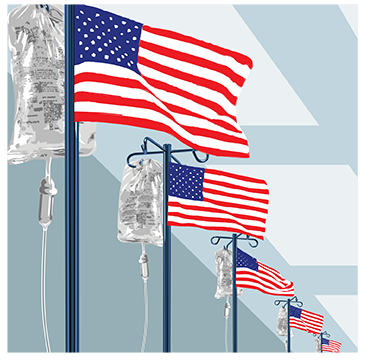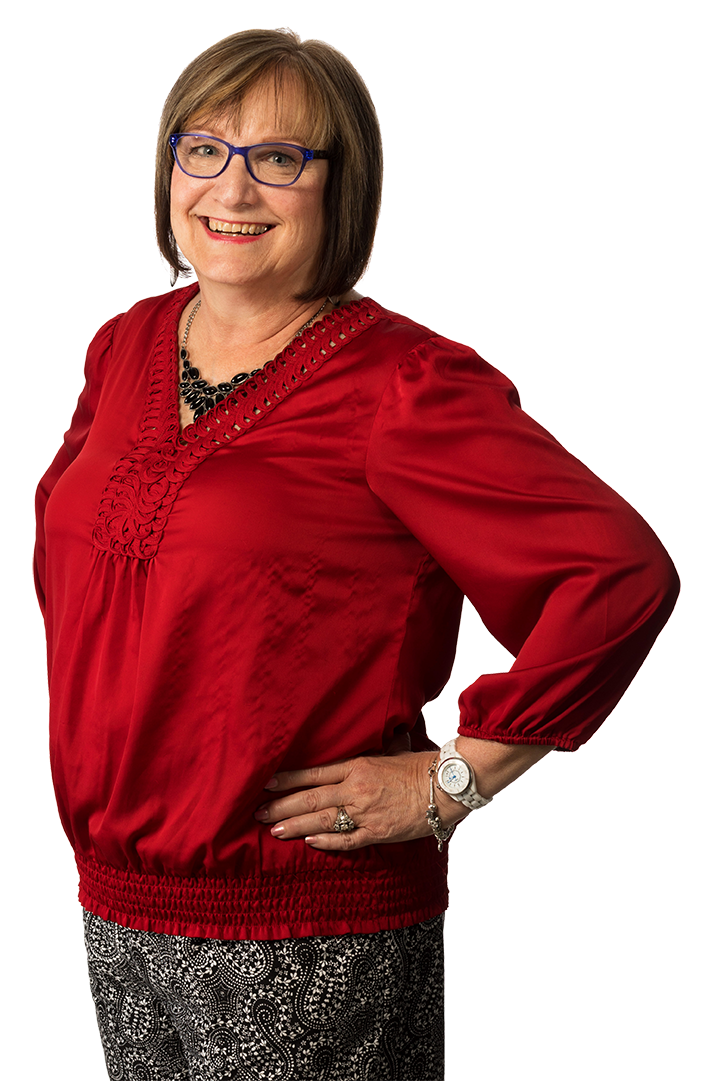Scope
News and Views from TTUHSC
Campus Heartbeat
Photo provided by Adam Frank

Lub dub. Lub dub. Lub dub. Lub dub. Lub dub. Lub dub. Lub dub.
The digital art piece, "Pulse," accurately monitors activity inside the new University Center on the Lubbock campus. The artwork is part of the Texas Tech University System Public Art Program. "We wanted the artwork to be a literal part of the circulatory of this building," said artist, Adam Frank. Sensors on the doors of the building communicate with the piece, signaling the heart to beat faster based on the number of people inside.
Watch Frank speak about the new artwork, "Pulse."
VA Clinic 2.0
Illustration: Daniel Hertzberg
The Need: More than 30,000 veterans in Lubbock and its bordering counties.
The Problem: Currently located off Interstate 27 and 66th Street, the Lubbock VA Clinic's lack of space combined with the inconvenient location makes it a challenge to access. Veterans often drive to Amarillo or Albuquerque for treatment due to lack of services offered.
The Resolution: A team of retired generals — Lt. Gen. Bernhard Mittemeyer, Maj. Gen. Walter Huffman, Maj. Gen. Edgar Murphy and Brig. Gen. Gary Harber — have made it their mission to provide better facilities and care to West Texas veterans with a new VA super clinic. Located across the street from TTUHSC and the UMC Health System provides a strategic partnership bringing specialty and social services.
The Impact: More veterans will have access to care and more physicians and TTUHSC students will be trained in treating veteran's medical issues.
"It's so important that we take care of the men and women who are willing to serve this nation; and TTUHSC wants to be an institution that serves our veterans," said Mittemeyer, chair emeritus for the TTUHSC School of Medicine Department of Urology and longtime university administrator.
The VA super clinic is scheduled to open in 2020.
Faculty Profile
By Kara Bishop
Photo by Neal Hinkle
 Sherry Sancibrian, MS, CCC-SLP (Health Professions '78)
Sherry Sancibrian, MS, CCC-SLP (Health Professions '78)
Interim chair of the School of Health Professions Department of Speech, Language and
Hearing Sciences and program director of speech-language pathology
Q: How long have you worked for TTUHSC?
A: This is my 35th year — I came to work for TTUHSC in May 1984. I actually had Melinda Corwin, PhD, CCC-SLP, (Health Professions ’89, ’87) as a student, and now she’s been the director of our Stroke & Aphasia Recovery (STAR) Program and a professor in the department for more than 20 years!
Q: Tell me about your workday.
A: I came to work this morning at 7:30 a.m. and entered grades and reviewed the admission report. After that, I met with a student, I’m having this interview with you currently (interview took place in May), and then I’m meeting with the dean of the School of Health Professions at 10:30 a.m. Another meeting at 11 a.m. concerning grading for clinical practicums, followed by a 30-minute break. At 1 p.m. and 2 p.m., I have meetings with graduate clinicians for documentation/electronic health records. At 4 p.m., I have a meeting about departmental finances. Then I’m going to run copies of the final exam that I’m giving in the morning at 9. Normally I’m also teaching and working in the clinic, but since finals are in progress, my days in May typically become catch-up days from the entire semester.
Q: How many courses do you typically teach?
A: I teach two to three courses per semester.
Q: When do you sleep?
A: I get some really good sleep between 12 a.m. and 2 a.m.!
Q: Why Speech-Language Pathology?
A: I’ve technically been an SLP from an early age. I was the oldest of four siblings living on an Air Force base in Tripoli, Libya. My youngest sister had some speech and language problems, and since we lived on the base, someone came in to work with her once every six weeks from Germany and would leave home programs for her. I became in charge of her home program working with her on her speech, which led me to choosing this career at the early age of 14.

